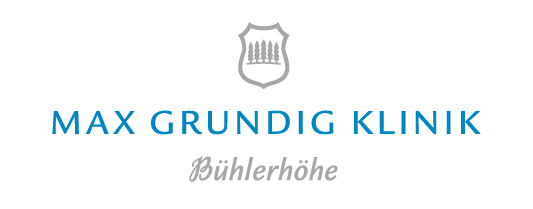The MRI 3.0 Tesla
The Best for the Benefit of Our Patients
The magnetic resonance tomograph has a magnetic field of 3 Tesla, which is higher than that of 1.5 Tesla MRI devices, providing new contrasts and more detailed information. As the first MRI it is equipped with a Tim (Total imaging matrix) 4G technology and a Dot (Day optimizing throughput) engine. In addition, its bright, open design with a diameter of 70 cm immediately conveys a pleasant atmosphere to the patient. Coloured light illuminations enlighten the examination room. Patients can listen to music during the scan, watch a film or look over large monitors into landscapes – a large window with a view into the park also provides a feeling of relaxation. Never before has high technology been so patient-friendly.
Special MRI-Examinations
MRI-Breast Diagnostics
The magnetic resonance examination is becoming increasingly important as a supplementary examination for certain questions relating to the female breast. It is used if the suspicion of the presence of breast cancer could not be safely ruled out by other methods.
MRI-Prostate Diagnostics
An examination of the prostate in a 3 Tesla MRI is recommended if the PSA value is elevated and/or a prostate biopsy has already been performed without tumor detection. If prostate cancer is confirmed, MRI can be performed to assess the extent of the tumour, as it is the best examination to assess the extent and thus plan the optimal therapy.
MRI-Whole-Body Diagnostics
As a painless procedure without X-rays, MRI is predestined for whole-body screening examinations. This enables doctors and patients to have a complete overview of the inner body. Possible diseases can thus be detected at an early stage, i.e. before symptoms occur.
MRI-Angiography
With an MRI examination, blood vessels, i.e. arteries and veins, can be depicted three-dimensionally so that stenoses, occlusions, thromboses, and other vascular malformations can be easily diagnosed. The method is non-invasive and therefore a good alternative to invasive Catheter Angiography. MRI-Angiography is particularly suitable for imaging intracranial arteries, brain veins, venous sinuses, cervical arteries, thoracic and abdominal aorta, renal arteries, and pelvic-leg arteries.
MRI-Cardiac Diagnostics
Previously, MRI was used in cardiac diagnostics for the examination of congenital vitae and heart tumours. Currently, MRI enables the measurement of regional and global cardiac function, the quantification of valve vacancies and shunt vacancies, as well as the examination of cardiomyopathies. In ischemic heart diseases, the primary diagnosis of coronary heart disease and the measurement of infarct size as well as the detection of myocardial vitality are successful.
The CT 128 Zeilen
The World's Most Successful Computer Tomograph
Unique image quality with minimal radiation exposure – the CT 128 Zeilen is the best available on the market today. Large body regions are scanned in the shortest time and with a sensational resolution never achieved before. The result are layered images of organs and tissue of unprecedented quality. This maximum image quality provides the technical precondition for diagnostics of the highest precision. The more precise and detailed the image quality, the more precise the resulting evaluation and diagnosis. And last but not least – the faster the causes of the disease are identified, the greater the chances of cure with a timely therapy.
Special CT-Examinations
CT-Blood Vessels Diagnostics
With computer tomography techniques getting better and better, the blood vessels can also be represented better. Particular progress has been made with the spiral CT and the computer-aided three-dimensional processing of sectional images. Computer tomography can make detailed statements especially in the area of the larger vessels (aorta or pelvic arteries).
CT-Lung and Abdomen Diagnostics
Computer tomography remains, regardless of radiation risks, the optimal examination for many clinical problems in the lungs and abdominal diagnostics. Because of the fast recording technique, optimal recordings can be made in a breath holding phase.
CT-Head Diagnostics
Computer tomography is frequently used for all questions of craniocerebral diagnostics. Especially in emergency diagnostics, it is an important method for detecting a stroke or in the initial diagnosis of accident patients.
CT-Tumor Diagnostics
Computer tomography is an established and relatively simple method for staging the malignancy of tumors in tumor diseases. It is particularly useful before therapy decisions, e.g. also for the planning of tumors, as well as postoperatively for the assessment of complications and aftercare.

